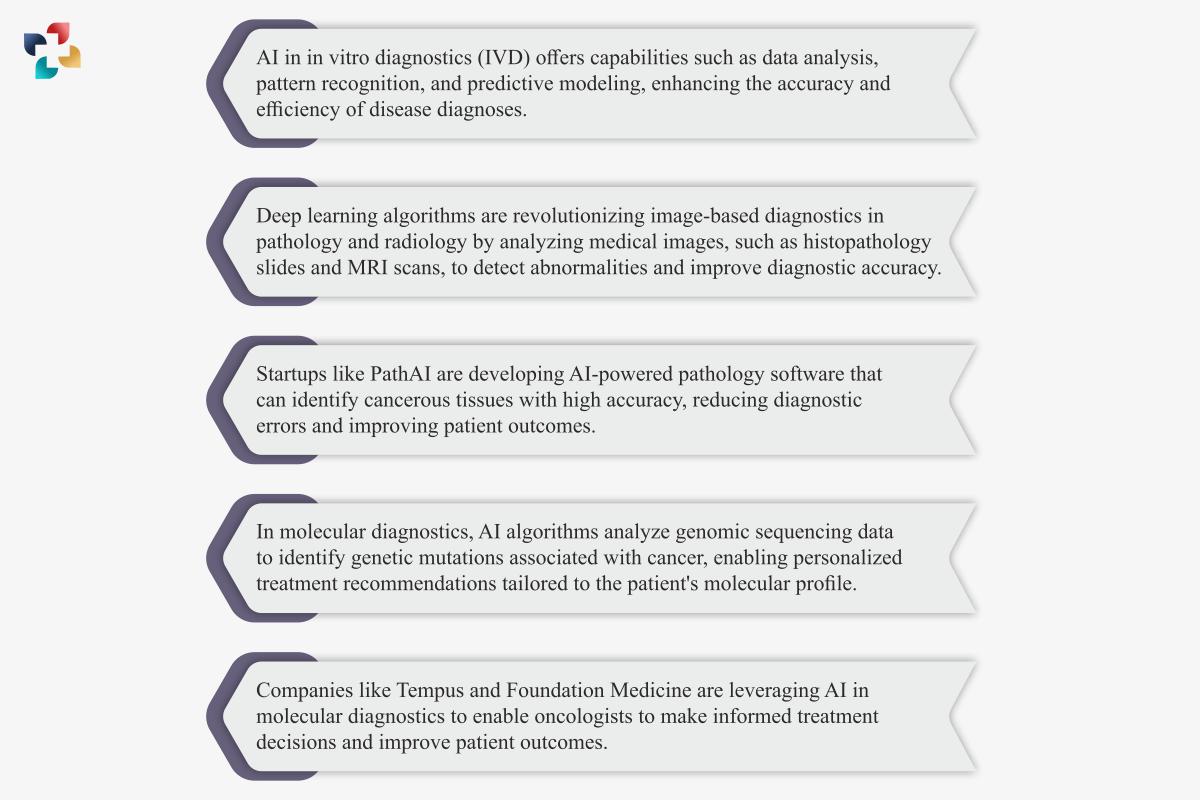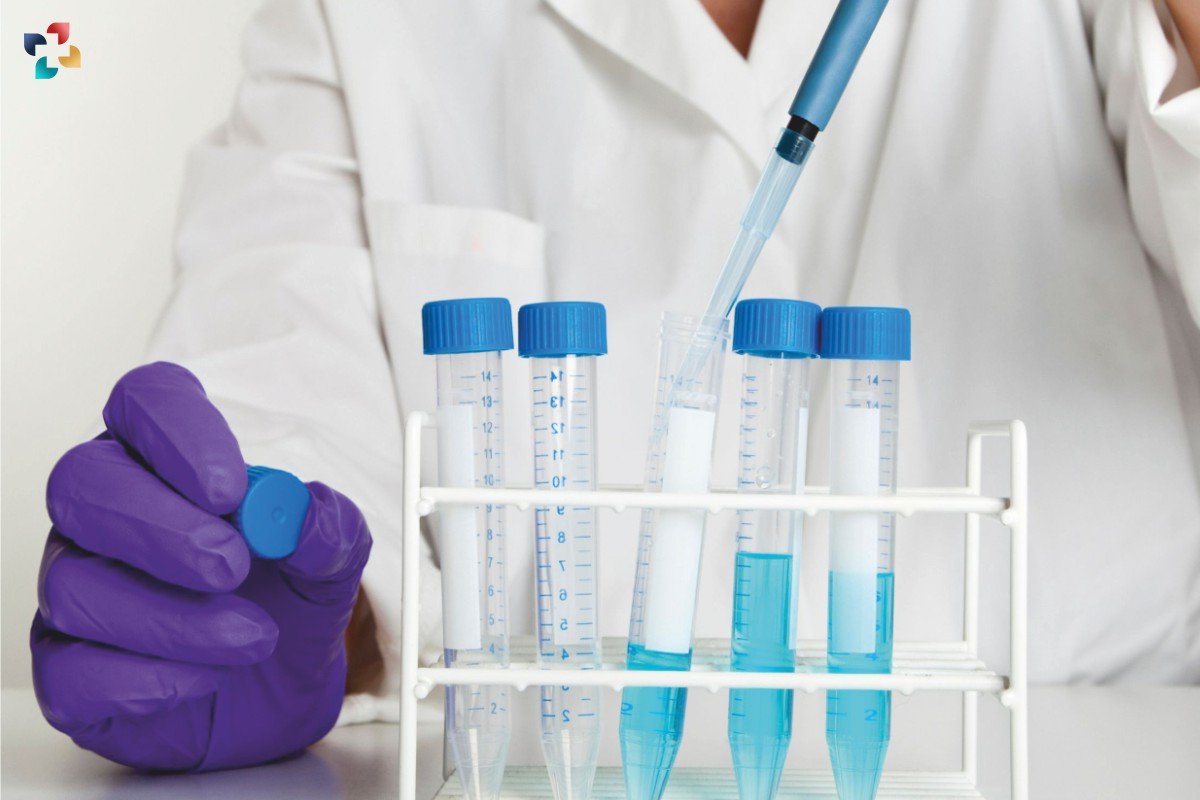Technologies in in vitro diagnostics (IVD) play a critical role in modern healthcare by enabling the accurate and timely diagnosis of diseases. Traditionally, IVD techniques have relied on manual processes and labor-intensive procedures, leading to limitations in efficiency, accuracy, and scalability. However, recent advancements in technology, particularly in the fields of artificial intelligence (AI), robotics, and automation, are revolutionizing the landscape of diagnostic testing. These emerging technologies hold immense potential to enhance the performance, accessibility, and cost-effectiveness of IVD, thereby improving patient outcomes and transforming healthcare delivery worldwide.
Here are 3 Emerging Technologies in In Vitro Diagnostics:
1. Artificial Intelligence in In Vitro Diagnostics:
Artificial intelligence (AI) has emerged as a powerful tool in the field of in vitro diagnostics, offering capabilities such as data analysis, pattern recognition, and predictive modeling. By leveraging machine learning algorithms, AI systems can analyze large volumes of complex data generated from diagnostic tests, leading to more accurate and personalized disease diagnoses.
One notable example of AI-driven IVD is the use of deep learning algorithms in image-based diagnostics, such as pathology and radiology. These algorithms can analyze medical images, such as histopathology slides or MRI scans, to detect abnormalities and assist pathologists and radiologists in making accurate diagnoses. For instance, PathAI, a Boston-based startup, has developed AI-powered pathology software that can identify cancerous tissues on histopathology slides with high accuracy, reducing diagnostic errors and improving patient outcomes.
AI is also being applied in molecular diagnostics to analyze genetic and molecular data for disease diagnosis and personalized treatment recommendations. Companies like Tempus and Foundation Medicine utilize AI algorithms to analyze genomic sequencing data and identify genetic mutations associated with cancer, enabling oncologists to tailor treatment plans based on the patient’s molecular profile.

2. Robotics Technologies in In Vitro Diagnostics:
Robotics technology is increasingly being integrated into laboratory workflows to automate repetitive tasks, streamline processes, and improve efficiency in diagnostic testing. Robotic systems can perform sample handling, specimen processing, and assay preparation with precision and consistency, reducing the risk of human error and increasing throughput in diagnostic laboratories.
One example of robotics technologies in in vitro diagnostics is the use of automated liquid handling systems for sample preparation in molecular diagnostics. These systems can accurately dispense reagents, mix samples, and perform dilutions, allowing for standardized and reproducible results in PCR, sequencing, and other molecular assays. Companies like Hamilton Robotics and Tecan offer robotic platforms specifically designed for automated nucleic acid extraction and purification, enabling high-throughput testing for infectious diseases, genetic disorders, and cancer biomarkers.
In addition to liquid handling systems, robotic platforms are also utilized for complex tasks such as specimen sorting, storage, and retrieval in biobanks and biorepositories. These systems employ advanced robotics technology to manage large volumes of biological samples, ensuring sample integrity and traceability throughout the storage and retrieval process. Furthermore, robotic automation extends to the analysis phase, where robotic systems can perform automated microscopy, imaging, and analysis of specimens, enabling high-throughput screening and analysis in drug discovery and research applications.
Key Points:
- Robotic systems technologies in in vitro diagnostics streamline laboratory workflows.
- Automated liquid handling systems enhance precision and consistency in sample preparation.
- Robotics technology facilitates high-throughput testing for infectious diseases and genetic disorders.
- Robotic platforms manage specimen sorting and storage in biobanks.
- Automated microscopy and imaging enable high-throughput screening and analysis in research applications.
3. Automation Technologies in In Vitro Diagnostics:
Automation plays a crucial role in streamlining laboratory workflows and improving operational efficiency in diagnostic testing. Automated systems can perform sample processing, assay incubation, result interpretation, and data analysis, reducing the need for manual intervention and speeding up turnaround times for diagnostic tests.
One notable example of automation technologies in in vitro diagnostics is the implementation of fully automated immunoassay analyzers for clinical chemistry and immunochemistry testing. These systems can perform multiple tests simultaneously on a single sample, offering rapid and comprehensive diagnostic results for a wide range of biomarkers and analytes. Companies like Roche Diagnostics and Abbott Laboratories manufacture automated immunoassay platforms that are widely used in clinical laboratories for routine testing, disease monitoring, and therapeutic drug monitoring.
Case Studies:

- Deep Learning in Digital Pathology In a study published in Nature Medicine, researchers from Stanford University developed a deep learning algorithm for automated detection of metastatic breast cancer in lymph node biopsy slides. The algorithm, trained on a dataset of digitized pathology images, achieved a sensitivity of 99% and a specificity of 98% in detecting metastatic cancer cells, outperforming experienced pathologists. This AI-powered tool has the potential to improve the accuracy and efficiency of breast cancer diagnosis, leading to better patient outcomes and reduced healthcare costs.
- Automated Nucleic Acid Extraction in Infectious Disease Testing In response to the COVID-19 pandemic, diagnostic laboratories worldwide have adopted automated nucleic acid extraction systems for high-throughput testing of SARS-CoV-2. The Roche MagNA Pure 96 and the Qiagen QIAcube are examples of automated extraction platforms that can process hundreds to thousands of samples per day, enabling rapid and scalable testing for COVID-19. These automated systems have played a crucial role in expanding testing capacity, detecting new variants, and controlling the spread of the virus in communities.
Conclusion:
Technologies in in vitro diagnostics, emerging technologies such as artificial intelligence, robotics, and automation are transforming the field of in vitro diagnostics, offering unprecedented capabilities for accurate, efficient, and scalable diagnostic testing. By harnessing the power of AI algorithms, robotics platforms, and automated systems, healthcare providers can improve patient outcomes, enhance laboratory efficiency, and advance disease diagnosis and treatment across a wide range of medical specialties. As these technologies continue to evolve and mature, they hold promise for revolutionizing healthcare delivery and addressing global health challenges in the 21st century.
Also Read: 9 Facts: How are Robotics Changing Healthcare Industry?








